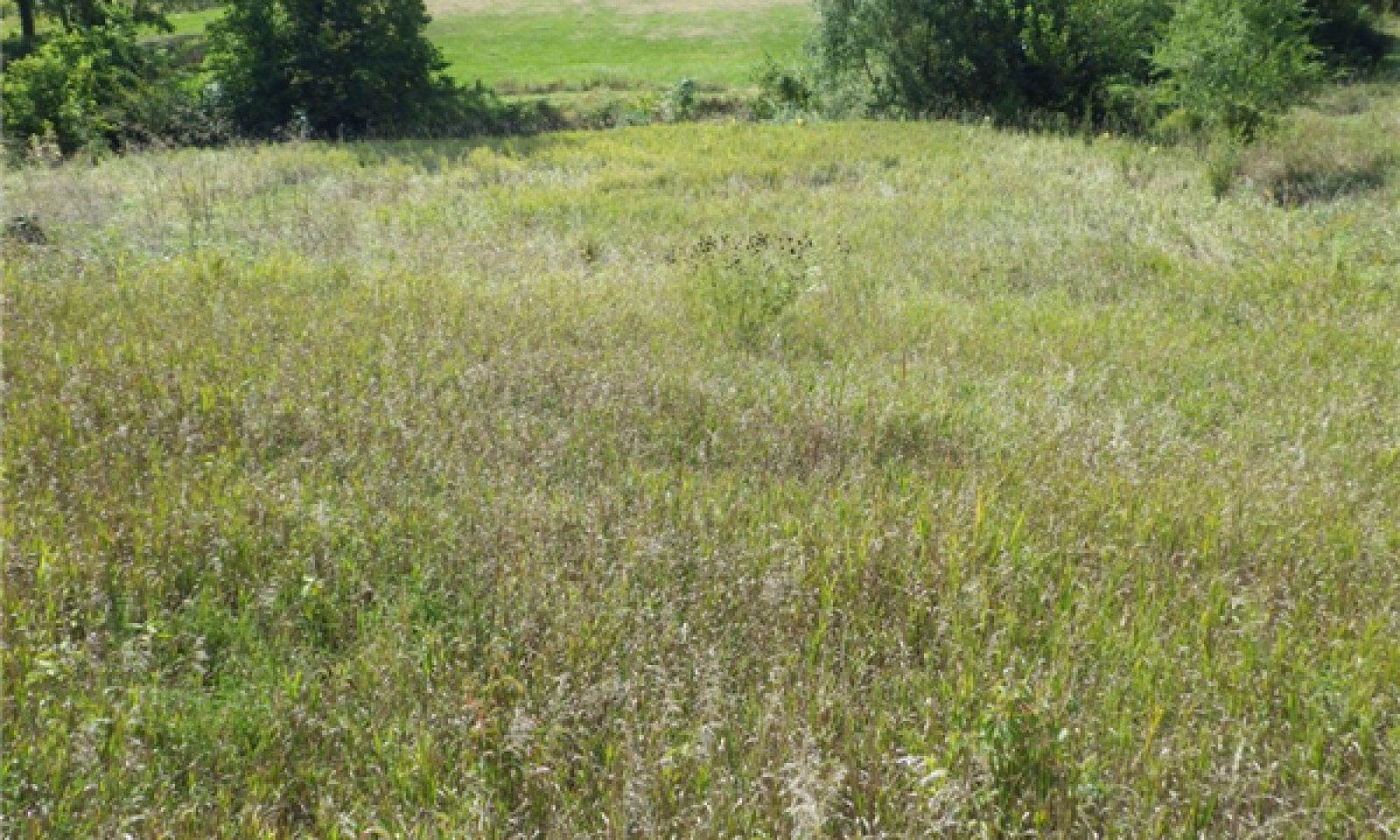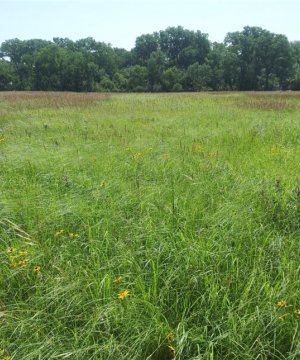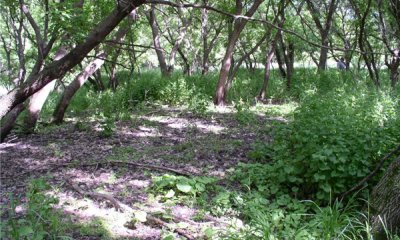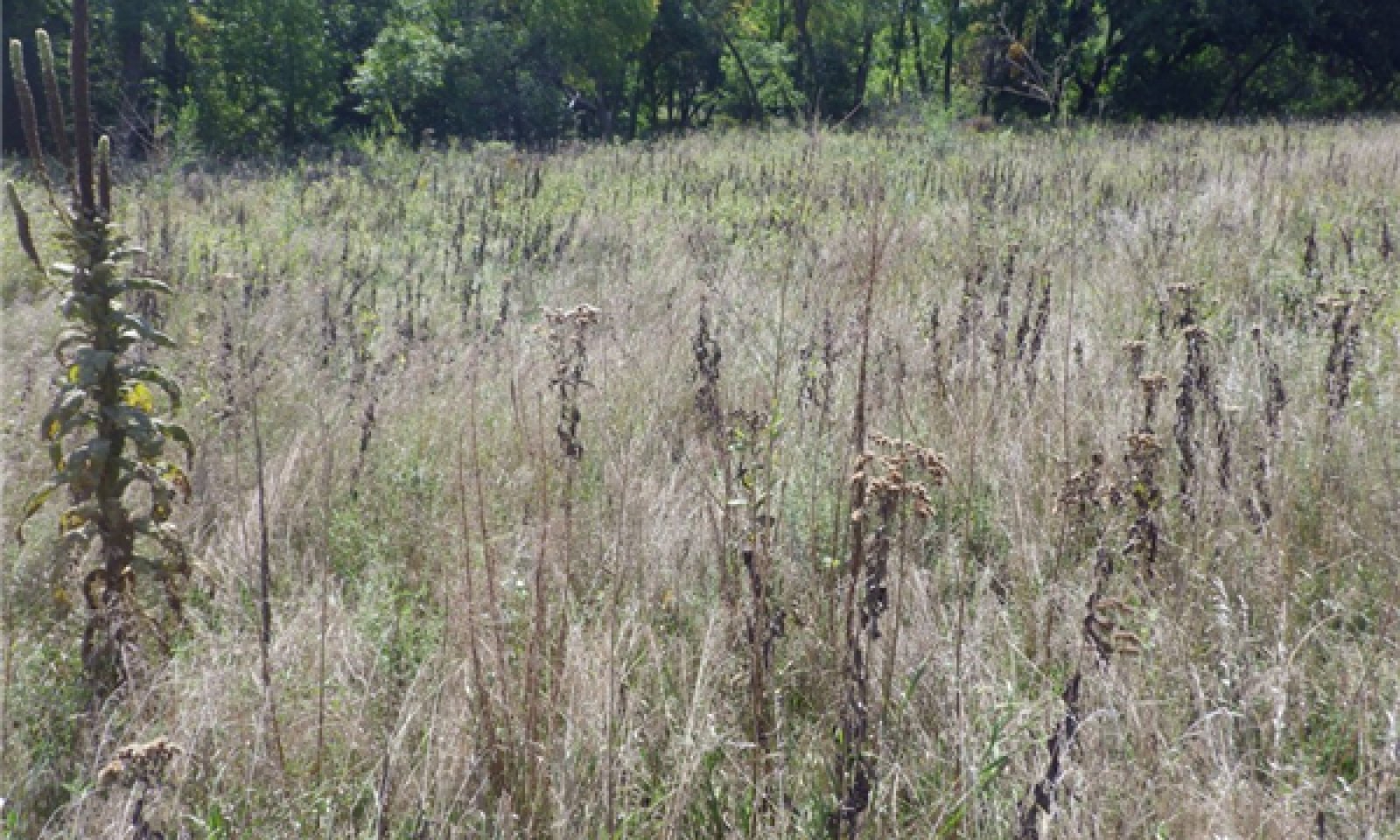
Loamy Overflow
Scenario model
Current ecosystem state
Select a state
Management practices/drivers
Select a transition or restoration pathway
-
Transition T1A
Non-native grasses increase
More details -
Transition T1B
Disturbance; annual species dominant
More details -
Transition T1C
Woody species dominate
More details -
Restoration pathway R2A
Restoration inputs; native warm season grasses dominate
More details -
Transition T2A
Increasing dominance of cool season grasses
More details -
Transition T2B
Disturbance; annual species dominant
More details -
Transition T2C
Woody species dominate
More details -
Transition T3A
Management inputs; increase of warm season grasses
More details -
Transition T3B
Cool season grasses dominate the site
More details -
Transition T3A
Woody species continue to increase and dominant the site
More details -
Transition R4A
Restoration inputs; warm season grasses dominant
More details -
Restoration pathway R5A
Restoration inputs to promote warm season grasses
More details -
No transition or restoration pathway between the selected states has been described
Target ecosystem state
Select a state
Description
This state comprises the communities within the range of natural variability under historic conditions and disturbance regimes. Patterns created by wildlife use and fire would have created a mosaic of communities across the landscape; however, warm-season tallgrasses are dominant, with a subdominant to minor contribution from native cool-season grasses, forbs, and shrubs.
Fire and bison herbivory were the dominant disturbance regimes that historically maintained the tallgrass dominance with a diverse forb component. Furthermore, bison grazing was closely linked to fire patterns as the animals preferred grazing burned areas offering lush regrowth devoid of decadence and of higher nutritive quality. Thus, historic plant communities were subjected to occasional burning and grazing, with substantial rest/recovery periods as the fuel load rebuilt to eventually start this process again. Fire return intervals of 3-4 years served to suppress woody species, particularly the various deciduous tree and shrub species prevalent in adjacent riparian corridors.
The degree to which observed conditions represent this state largely depends on how closely the management has mimicked these past disturbance effects.
Submodel
Description
This state can manifest three ways: 1) the appearance of introduced cool-season grasses, 2) the expansion of deciduous shrubs and/or trees, or 3) some combination of these. Kentucky bluegrass and smooth brome are the primary cool-season grass invaders in this region, commonly found in roadsides, disturbed areas, and pastures intentionally seeded for cool-season forage. Management practices and/or environmental conditions that are not favorable to native grass vigor may allow introduced grasses to invade the site thereby decreasing native diversity and abundance, particularly of forbs.
In the absence of the historic fire regime, woody deciduous species may also expand to become an influential component of the community. The invasive component tends to have very high reslience, is extremely difficult to eradicate, and what might be considered a new "contemporary" range of natural variability is seen as competition between the native grasses and introduced/woody species for space and resources.
Submodel
Description
Cool-season invasion has progressed to the point that native species comprise a negligible portion of the community and the aggressively rhizomatous invasives preclude warm-season tallgrass germination and seedling survival. The native component may be completely absent, and the site resembles a seeded pasture. Woody competitiveness for sunlight, water, space, and other resources continues to increase as desirable herbaceous species are shaded out, crowded out, or otherwise suppressed.
Submodel
Description
Nutrient cycling, hydrologic function, and/or soil stability have been severely altered, and possibly compromised. This is a highly variable state in which the specific plants observed will depend largely on the original community and the nature of the disturbance. This condition encompasses (but is not necessarily limited to) events such as severe fire impacts, heavy continuous grazing, heavy nutrient inputs, and abandoned cropland.
Submodel
Description
Under historic disturbance regimes, frequent and uncontrolled fire and wildlife browsing served to keep woody species in check. However, in the absence of fire (either wild or prescribed), it's not uncommon for the woody trees and shrubs normally limited to riparian areas to expand into the floodplains, regardless of herbaceous community composition.
Submodel
Mechanism
In the presence of introduced cool-season grasses, environmental conditions and/or management that reduces native vigor and stand resilience, and frees up resources (space, sunlight, nutrients, water) will allow for colonization of Kentucky bluegrass and smooth brome. Likewise, similar processes may also allow for deciduous woody shrubs and trees such as smooth sumac, roughleaf dogwood, and Siberian elm to expand.
Mechanism
There are many possible triggers for this transition that may occur as acute events (e.g. plowing) or cumulative impacts of chronic events (e.g. long-term undermanaged grazing.) The absence of deep-rooted perennial cover exposes the site to topsoil loss, open nutrient cycle, and free space which collectively allow for opportunistic annual species to dominate.
Mechanism
The presence of an invasion source coupled with fire exclusion allows cedar seeds to germinate and establish within the herbaceous stand. This typically begins near fencerows, woody draws, etc, and accelerates outward as propagules increase. Lack of intervening action allows cedar expansion to continue, and tree sizes to increase. Cedar will eventually modify site function in ways that promote further encroachment such as rainfall interception and stemflow, heavy duff litter, and shading of the herbaceous understory.
Mechanism
Eradication of introduced cool-season grasses from this site will require long-term, targeted management efforts to create an adverse environment during the spring and late fall when bluegrass and brome are most actively growing, with favorable conditions during the summer to promote native warm-season species. Targeted practices such as prescribed burning, flash grazing, and herbicide are often employed at strategic times of the year to set back undesirable species. The combination of practices should strive to mimic the historic disturbance regimes to which the desirable native species are best adapted.
Mechanism
If the conditions which initiated and fomented the colonization and expansion of cool-season invasion are not removed or mitigated, stand composition will continue to shift in this direction and begin to resemble a monoculture of bluegrass and/or brome. Due to the dense rhizomatous root mat of brome and bluegrass, native species suffer decreasing opportunities to contribute propagules, and individual plants lost are not replaced by desirable natives.
Mechanism
There are many possible triggers for this transition that may occur as acute events (e.g. plowing) or cumulative impacts of chronic events (e.g. long-term undermanaged grazing.) The absence of deep-rooted perennial cover exposes the site to topsoil loss, open nutrient cycle, and free space which collectively allow for opportunistic annual species to dominate.
Mechanism
The presence of an invasion source coupled with fire exclusion allows woody species to establish. This typically begins near fencerows, woody draws, etc, and accelerates outward as propagules increase. Lack of intervening action allows woody species expansion to continue, and tree sizes to increase.
Mechanism
Aggressive intervening actions will be required to simultaneously recolonize native grasses and suppress vigor in undesirable species. Restoration follows the same principles as the R2A pathway, but may also require native range seeding if the latent seedbank is inadequate.
Mechanism
Nutrient cycling, hydrologic function, and/or soil stability have been severely altered, and possibly compromised. This is a highly variable state in which the specific plants observed will depend largely on the original community and the nature of the disturbance.
Mechanism
The presence of an invasion source coupled with fire exclusion allows cedar seeds to germinate and establish within the herbaceous stand. This typically begins near fencerows, woody draws, etc, and accelerates outward as propagules increase. Lack of intervening action allows cedar expansion to continue, and tree sizes to increase. Cedar will eventually modify site function in ways that promote further encroachment such as rainfall interception and stemflow, heavy duff litter, and shading of the herbaceous understory.
Mechanism
With favorable weather and site stability, it may take just a few years for the site to naturally return to a perennial community. Range seeding can “jump start” the recolonization of desirable species and may re-establish a near reference grass community; although, forb diversity may take longer to recover. Depending on the nature of the disturbance(s), additional ameliorative efforts may be necessary to mitigate accelerated erosion and weedy competition until the seeded perennial community has stabilized.
It is possible for a disturbance and/or subsequent processes (e.g. accelerated erosion) to profoundly, and even permanently, alter fundamental soil properties in such a way that the site may never again exhibit its historic structure or function without extraordinary restoration inputs.
Mechanism
Tree mortality is required to restore a grassland state, however the herbaceous response will depend on many factors such as method(s) used, mortality rates, and the remnant herbaceous species. Mechanical and chemical methods can remove cedars but will have little if any notable impact on the herbs. Reintroducing the historic fire regime will provide the most profound and beneficial effects, and seasonal timing and burn intensity can have significant influence on the herbaceous outcome. As a general rule, hot spring burns will not only kill trees but also stress shallower-rooted invasive cool-season grasses and promote a ahift in favor of the reference community.
Model keys
Briefcase
Add ecological sites and Major Land Resource Areas to your briefcase by clicking on the briefcase (![]() ) icon wherever it occurs. Drag and drop items to reorder. Cookies are used to store briefcase items between browsing sessions. Because of this, the number of items that can be added to your briefcase is limited, and briefcase items added on one device and browser cannot be accessed from another device or browser. Users who do not wish to place cookies on their devices should not use the briefcase tool. Briefcase cookies serve no other purpose than described here and are deleted whenever browsing history is cleared.
) icon wherever it occurs. Drag and drop items to reorder. Cookies are used to store briefcase items between browsing sessions. Because of this, the number of items that can be added to your briefcase is limited, and briefcase items added on one device and browser cannot be accessed from another device or browser. Users who do not wish to place cookies on their devices should not use the briefcase tool. Briefcase cookies serve no other purpose than described here and are deleted whenever browsing history is cleared.
Ecological sites
Major Land Resource Areas
The Ecosystem Dynamics Interpretive Tool is an information system framework developed by the USDA-ARS Jornada Experimental Range, USDA Natural Resources Conservation Service, and New Mexico State University.






